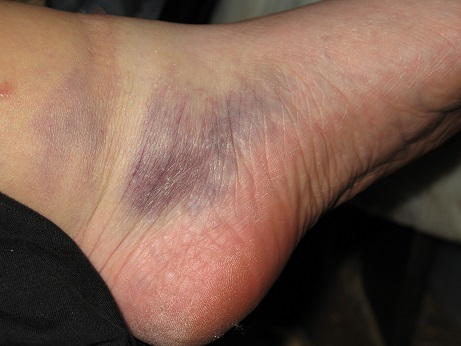 New Health Guide
New Health Guide
When an artery, vein, capillary or blood vessel wall is damaged, an accumulation of blood can form in any part of our body. This is known as a hematoma. A hematoma in leg means an accumulation of leaked blood in the tissues of their lower leg, causing clotting in the damaged location and preventing blood flow to the area. This condition generally affects the elderly due to deterioration in the strength of tissue and skin over years of aging.
As with most medical conditions, there are symptoms to look out for. For hematoma leg sufferers, these are leg pain/difficulty walking, tenderness, and redness around effected area. The intensity of the symptoms can vary depending on the severity of the injury, and can get much worse if left untreated.
The most occurring cause of a hematoma is trauma or injury. Bruising of the skin is the most visual example of a hematoma, but they can also form internally. Head injuries, for example, can cause a hematoma to form inside the skull, which may compress the brain.
Other common causes of hematoma include chronic disease, coagulation disorders, or the use of anticoagulation medications. Patients may also form a hematoma after surgery, the use of blood thinners by surgeons can be a cause for this. A patient straining and popping a blood vessel, or thin blood vessels around the surgical site can also be a cause. In some instances, poor surgical technique can lead to a hematoma after surgery.
Hematomas can be serious and life frightening in the case of a head injury (as mentioned above), or a pelvic fracture allowing a rapidly increasing volume of blood to accumulate unnoticed.

In the case of minor bruising, a method known as RICE should be an effective hematoma leg treatment. RICE stands for Rest (resting the leg, ensuring no strenuous activity), Ice (apply ice to the affected area to subside pain & bleeding), Compression (wrap the affected area to help reduce swelling), and Elevation (lifting the leg above the heart to reverse the blood flow from the affected area).
Other hematoma treatment options include heating pads and ointments, which are advised to decrease hematoma; pain relievers prescribed to relieve any discomfort a person may be feeling due to the condition; and antibiotics, which are advised in instances of infections.
Surgical drainage can be offered in cases of large hematoma, and immediate surgery may be required for hematoma in certain areas (such as over the shin bone).
Turmeric is packed full of antibacterial and antiseptic properties, helping with hematoma treatment and recovery.
Another highly recommended course of action to help with recovery is ensuring to maintain a well balanced, nutritious diet. Increasing your intake of protein will help significantly in regaining muscle strength. Many foods are rich in protein, such as meat, fish, cheeses, poultry, eggs, milk, and certain vegetables (such as asparagus). Consuming a high amount of vitamin C will also be very beneficial in hematoma recovery, high quantities of vitamin C can be found in citrus fruits, such as oranges, lemons, limes etc.
You are especially at risk of developing a leg hematoma if you regularly play contact sports, such as hockey, or American football. A player is likely to receive many bumps and knocks throughout the game, so ensuring to wear the correct protective gear in order to minimize the impacted area will significantly help to prevent the formation of a hematoma.